If you want wilderness, Norway is a great place to seek it.
Everyone knows this. And yet, most visitors to Norway go to the same few places, where the wilderness can be surprisingly full of people. Preikestolen. Trolltunga. Jotunheimen. Lofoten.
There’s nothing wrong with that, of course. And it certainly makes things a lot easier for the rescue crews. They can basically just walk back and forth along a couple of popular trails, picking up those who think that selfie sticks, shorts and high heels count as hiking gear.
With the steadily growing crowds roaming the Norwegian nature, you must be ready to put some extra effort into it if you want true wilderness.
One particularly wild part of Norway is the Lomsdal-Visten National Park, located at the exact geographical center of Norway. It’s rough, but beautiful, and you can walk in it for days without seeing other people or even a trace of human activity.
Only a handful of hikers per year go deep into this park. Which is great, as it keeps the place in pristine condition. I don’t want as many people as possible to go there, but this national park certainly can still handle a significant increase in the number of deserving visitors.
I went in August 2019, and here’s what I found. Do with it as you please.
Day One
I’d argue that the best way to start your hike in Lomsdal-Visten, is to begin with a boat trip. Immediately leave civilization completely behind, and just start enjoying Norway’s nature at its best.
Our trip begins in the town of Brønnøysund in Nordland county. A bus from there to Hommelstø takes just over half an hour. Because of the few visitors to Lomsdal-Visten, there’s no scheduled public transportation into the park. We pay a guy to rent his boat for the time it takes to travel from Hommelstø to Børiøyra. It’s about an hour. The price is the same whether you’re 1, 2, 3 or 4 hikers. The boat can’t fit more than that.
Sailing into a sidearm of Velfjord is an adventure on its own, as we’re surrounded by increasingly steep mountain sides. It’s as scenic as any of the more famous fjords further south in Norway, and without any roads or power lines to diminish the view.
When our boat guy leaves us, we suddenly feel very alone in the world. Our mobile phone coverage was lost somewhere out on the water.
We’re on our own now.
A trail leads into the forest behind an old abandoned farmhouse. It’s eerily quiet. No one lives here any more.
Thankfully, there’s not a banjo to be heard. Shaking off the feeling of participating in a good old horror movie, we take a couple of photos and start walking.
This national park has few facilities for hikers, but a couple of old bridges are in place to assist hikers across the many rivers here.
We’re here in the late summer and the weather has been unusually dry, so we don’t really need this bridge. Normally, though, plenty of water comes flowing through here. It’s a good thing that these bridges are here, even though they look a bit tired.
After an initial climb we arrive at the first scenic view on this trail.
We’re looking back at where we started, it’s right where you see the water. It’s not a bad reward for just an hour of hiking.
I’m doing this hike together with my father. I’ve never been here before, and it’s been almost 40 years since he last hiked through here. He has fond memories of that. We are here to make some new ones.
Our first day of hiking is a short one. After just a couple of hours we arrive at the only cabin we will see on this trip, Strompdalshytta. It’s not locked, but open to all hikers.
The cabin is managed by the Norwegian Trekking Association. Spread out across all of Norway there are some 500 cabins of this kind. To stay in one of them, you just pay a modest amount for the privilege when and if you return to civilization.
No one would know if you stayed for free, but hikers are good people who willingly pay for this service. It’s a great system, especially those times when you plan on staying in a tent, but then the weather turns nasty on you. Just go to a cabin like this one, put some firewood in the oven and get yourself warm and dry. Everything you need is in there, maybe except wi-fi.
Some cabins even store canned food. Take some if you want, and pay for it when you get home. They only charge about the same price that any grocery store does.
Day Two
It’s early morning when we cross the first major river of the day, Breivasselva. There’s a lovely waterfall right above the crossing. Had we come here later on this hot day, that pool would have been perfect
for cooling down before continuing.
It’s a good sized waterfall, but there are greater ones to come.
We cross the river on another old bridge. We go one at a time, as the bridge sways quite heavily back and forth when we step on it. But it’s perfectly fine, and a lot better than attempting to ford the river.
After this one, there are no more bridges to help us.
After the waterfall, the trail takes us through a forest and simultaneously almost straight up a mountain.We enjoy the shade for as long as it lasts. Soon we will reach the tree line, from where we will walk on mountains until almost the end of the hike.
We’re so far north now that the tree line is just 300 meters above sea level, or less in many places.
There you have it; Lomsdalen, a wide valley with a wild river and many rapids coming through. While there’s no forest, the valley floor is dotted with quite a few anti-social trees. They keep a few meters distance between them.
I’m not sure why they don’t stick closer together. Maybe the ground is simply too rocky to support more closeness. This area was all covered in enormous glaciers until a few millennia ago, and turning polished rock into soil is a process that takes a long time.
Among the most fascinating plants here are the sundews. They are a carnivorous species that somehow survives in these mountains, where the insect season is short, but intense.
The name sundew comes from the glistening drops of glue-like substance they’re all but covered in, which look vaguely like dewdrops. Flies get stuck in them, allowing the plant to slowly grasp and devour the poor little things.
Near the start of Lomsdalen valley, the trail ends on a meadow. Until almost a century ago, a small farm was located right here. It shows.
The vegetation differs here, it’s the most fertile soil of the entire valley. The people who put their farm here weren’t stupid. Still, it was impossible to produce enough harvest here to survive, and the people left eventually. A pile of rotting planks is the only proof that once upon a time someone lived here.
From the valley floor we start climbing up a mountain, Middagsfjellet. It translates to Noon Mountain. Those who lived at the farm down in the valley probably came up with the name. At noon, every day, the sun would be located somewhere straight above or below the top of this mountain, observed from that farm. It’s a most practical name for a mountain.
Halfway to the top we look east, through Grunnvassdalen valley. Hiking it is a diabolical effort. In places it’s like a canyon, and the terrain is complicated to navigate. At the far end of the valley there’s a fantastic waterfall, rarely observed up close by human eyes. We’ll try to get there by walking up and down a series of mountains on the south side of the valley.
To help us find our way through the wilderness, my father brought this map. It’s a 1949 revision of a map from 1894.
I’m glad mountains tend to not change very much.
Close to the top of Middagsfjellet we spot our first reindeer on this trip. Can you see it? It’s cooling down on the snow, of course.
I sneak up on the reindeer like a mountain ninja. It’s a magnificent specimen, with antlers so large that they pretty much force this guy to stay in the mountains. Moving through a forest would just lead to misery.
Higher up the mountain I found another interesting specimen. These mountains consists of mainly grey rock. And then suddenly there’s this, a remarkably black piece of rock full of tiny shining pieces.
It doesn’t belong here, but a glacier spent a few millennia pushing it here, from somewhere possibly quite far away. I’m fascinated.
Tired after reaching the peak of Middagsfjellet, we decide to camp for the night just behind it. The view is glorious in every direction. If you’re into mountains, that is.
I keep on complimenting this stone face of a mountain, Breivasstind, until it finally caves in and blushes.
The sunset is spectacular. It’s the kind where there are many clouds, and the sun gets to light them up from below just before it hits the horizon.
We see many UFO-like lenticular clouds in the sky. They spontaneously form in the shape of the mountains below them, and hang above “their” mountain for a long while before moving away and dissolving.
Day Three
The clouds from last night still hang around, so we get a bit of a gray morning. It’s perfectly fine with me. Yesterday was too hot, anyway.
We come upon physical evidence of reindeer roaming these mountains. It’s tempting to bring home as a souvenir, but normal coat hangers are actually more practical.
There’s beauty wherever you look, even in the small details. At this altitude, trees only come in dwarfish varieties, clinging to the ground.
Between long sections of barren mountain, we sometimes walk across lush valleys full of grass, moss and flowers. Thankfully it’s not mosquito season.
The landscape is awe-inspiring. So huge and pristine, and still slowly rising as a result of the weight of ice age glaciers having been lifted from it.
By now we are almost half-way to that waterfall at the top of the Grunnvassdalen valley. Looking down, I’m quite pleased that we chose a high route rather than try to follow the river upstream.
By now I’m pretty much obsessed with that waterfall. Even from this distance I can hear the roar from it, and I have to stop and admire it every time I get to see it from a new angle.
Lauvvasstinden mountain looks much like a volcano from this angle. This is granite, though, it’s just so wonderfully shaped by many a glacier.
I’m deeply impressed by how my father (he’s 72) just keeps going at a steady, good pace through these mountains. Stubborn he is.
I’m also deeply worried he’ll fall over and disappear down the mountain. He slips and falls a lot, but somehow he manages to do so only on the flat parts of the trail.
Another valley crossed. The dimensions of this landscape truly makes you feel very, very small.
There’s a six pixel reindeer somewhere in this photo. I’ll be impressed if you can spot it!
Late in the afternoon we finally reach the lake Elgviddevann, which empties itself into that waterfall I’ve been yearning for.
At last I reach the place where I can look back from the place I’ve been looking towards from a long time. This is the view from the top of the waterfall, looking down the river.
We have walked across all those mountains on the left/southern side of this valley.
This is how the noisy part of a loud waterfall looks.
Now I just have to figure out a way to get down there. Alive.
I made it! And let me tell you, it’s not easy to take a photo like this using the self timer on my camera.
That waterfall is roughly thirty-five times taller than me. Size matters.
One last look at the waterfall, as I climb back up to where I left my father, happily fishing. There’s great fishing in this lake.
Fun fact: Lomsdal-Visten national park is so far away from the real world, that this magnificent waterfall doesn’t even have an official name yet.
We keep stumbling up and down another couple of mountains, enjoying the increasingly beautiful light. “The golden hour” of photography can last many hours here, thanks to the (almost) midnight sun.
Everything in the world, even the snow, has a nice and warm glow to it.
I have a thing for natural mirrors. It makes everything look twice as nice.
On long hikes it’s important to make frequent stops, remove your boots, straighten your socks and take good care of your feet.
I try to do it once every hour. As if surroundings like these aren’t good enough reason to stop anyway.
In this rocky roller coaster of landscape, good camp sites are not easy to find. Eventually the urge to rest makes you care less about finding that perfect place.
We stop for the night in front of this small glacier. Getting cold drinking water will not be a problem here. Also, I go for a really quick swim.
Day Four
Our final day on the trail begins high above Elgviddevann lake. It feels a bit wrong to just walk away from a view that took so much effort to get to. But that’s what hikers do, so we walk away smiling.
It’s funny how you feel destroyed after your first day of hiking, but on day four, you feel like you could keep walking forever.
Nice weather helps.
The white in the mountains isn’t always snow and ice. In between all the rock, colonies of really rich vegetation have found a place to flourish.
When you’re tired of climbing up and down steep mountains, finding a nice and relatively level deep chunk of snow to walk on is a blessing.
We have reached the Jordbru lakes, and the color of especially the upper one is a striking extra blue. From here on, most of the walk will be nice and easy downhill.
Or so we think.
The blue above us is no less intense. And the way nature has put giant rocks in peculiar places makes our hike feel like a visit to an enormous outdoor gallery.
Lakes are lovely, but they can not exist without constantly being refilled. We spend much of the day crossing a multitude of rivers and streams that flow into this lake.
It could have been so much worse, though. We often see evidence that this land is extraordinarily dry now. Timing your hike right is always important, but especially so in areas where there are no trails or other facilities to rely on.
This is the hardest fording we have to do on this trip. Below the lower Jordbruvatn lake, a lively river blocks our trail back to civilization. After a couple of freezing cold test runs, we find a safe place to cross.
Our plan is to catch a bus back to Brønnøysund early in the evening from a specific point in the middle of nowhere. We thought we had plenty of time, when suddenly we discover a literally giant hole on our plan.
Where we thought we could just casually amble down a mountainside, reality claims that there’s a deep canyon that seems impossibly to descend into in a safe way.
We have to make a major detour up the mountain in front of us here. We’re running a little bit low on food, and also on willingness to live, so this worries me a bit.
It’s still a beautiful landscape to hike through. I love walking among giants like these.
Chunks of rock the size of houses have recently fallen off the mountain and now slow us down. We find a way around each of them them. Usually involving a bit of cursing.
We’re really running short on time now.
The next hour or so we practically run across the mountain and over patches of snow so steep that no reindeer would be foolish enough to follow us.
At last we reach the final peak. From here it’s at last really just going down.
That doesn’t help us much, though. Just as we see a road again for the first time since getting into that boat four days ago, our bus passes by far below us, and we’re still at least an hour and a half away from there.
We slow down and enjoy the hike again. Which we should have done the whole time, of course.
It doesn’t take long until we start missing the climbs in the mountain.
Getting down to the road through a really dense forest is just a long series of having branches slapping your face, while stepping into invisible holes in the ground.
Even I start falling over a few times now.
We make it down, completely worn out. Walking on level surface feels almost surreal, but is a welcome change for our feet.
What happen next is that thanks to the forces that be, a guy transporting a bus to Brønnøysund randomly stops for a pee right next to where we drop off our backpacks to discuss what to do next.
It turns out that the guy is someone my father knows. Instead of camping out another night, without food, we’re soon on our way back home, seated in the newest and, until we enter it, cleanest bus in the whole universe.
Everything always works out well in the end. And this time, doubly so.
Practical Information
This hike can be done by anyone with a little bit of hiking experience. I do not recommend using a map from 1894. Try getting an updated GPS map and trail instead.
Here’s the route we followed:
The purple line at the top left is the boat ride we began with.
The first red line is our hike the first day, the first green line is day two, the second red line is day three, and you can probably guess what the second green line is.
Except for the first day, every day was a long and strenuous one. If you can, use five days instead, and do some exploring around Elgviddevann and a bit down the Grunnvassdalen valley. It’s a really wonderful area.
For more information, see the official web pages of Lomsdal-Visten National Park.
I’m also happy to answer any questions you may have regarding hiking here or anywhere else I’ve been. Please use the comments section below for that.
Happy trails!
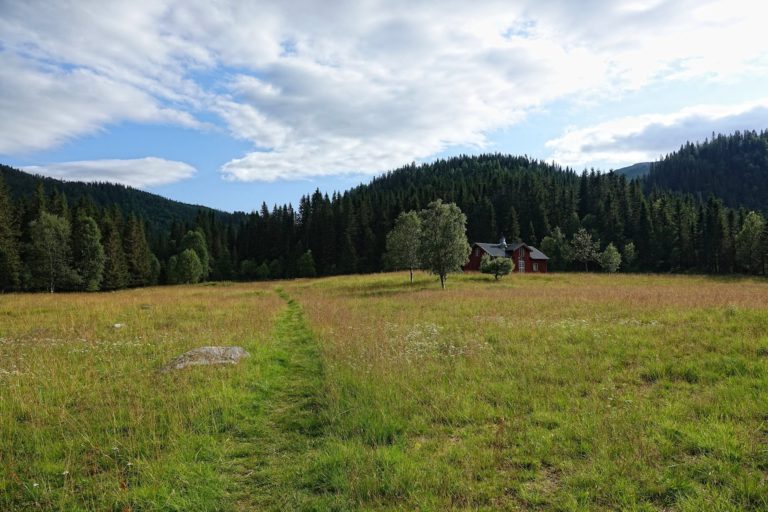
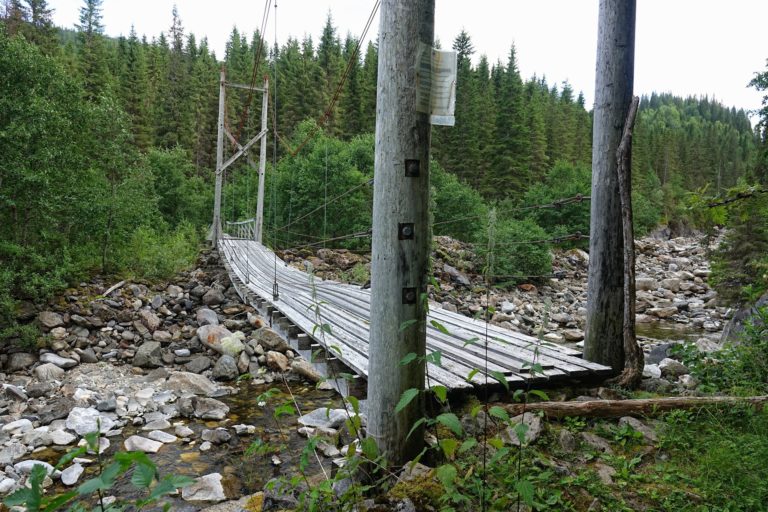

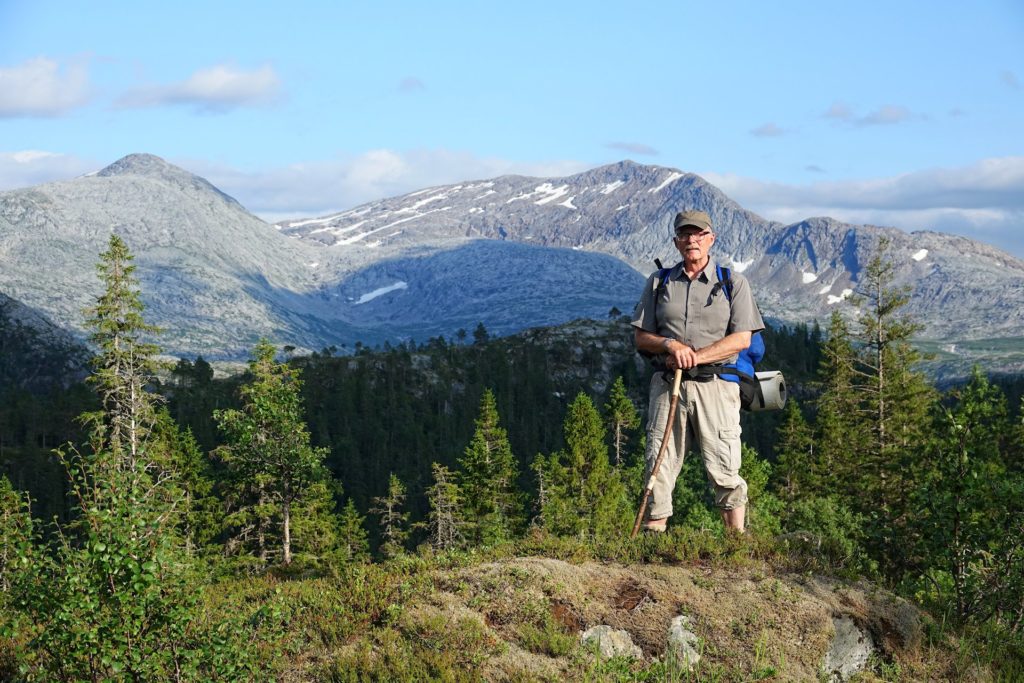

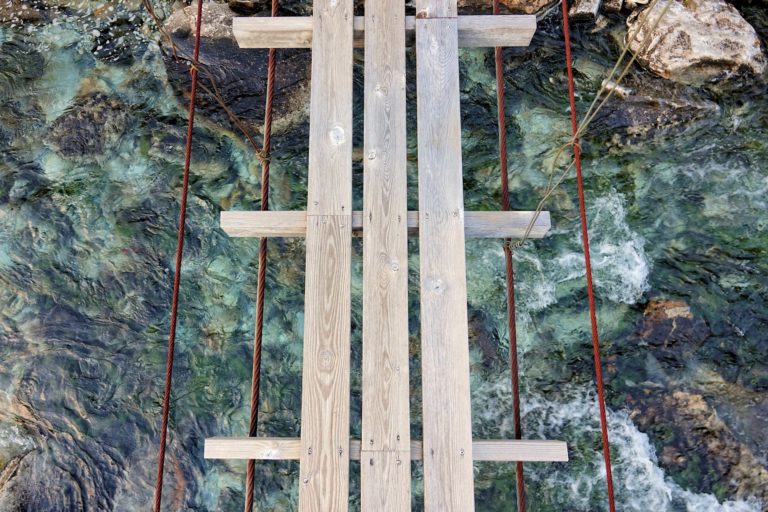

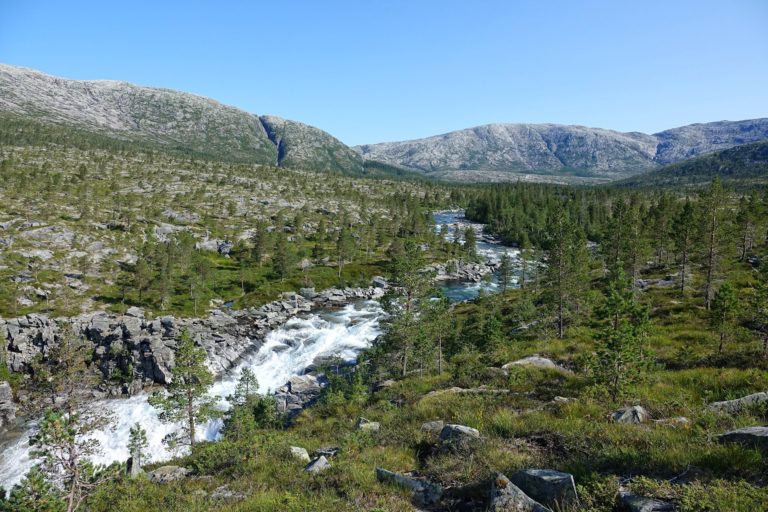


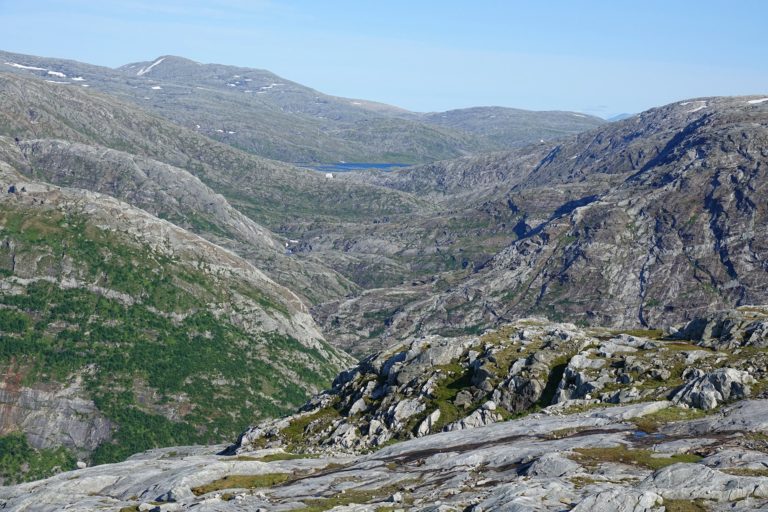

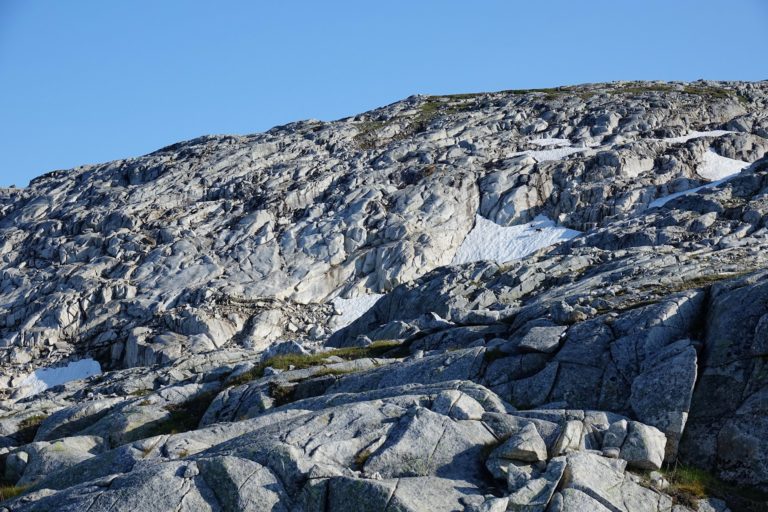
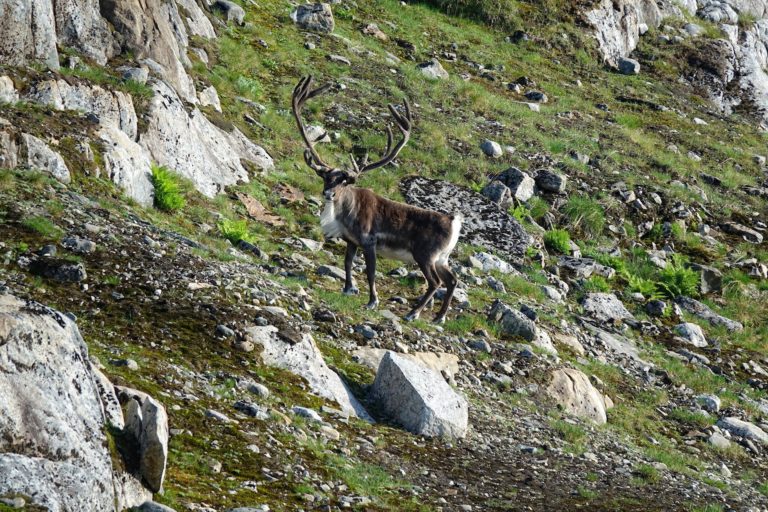
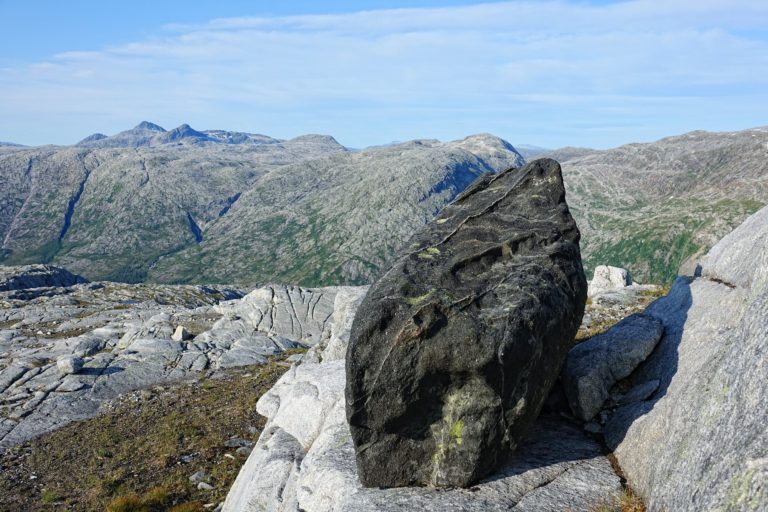
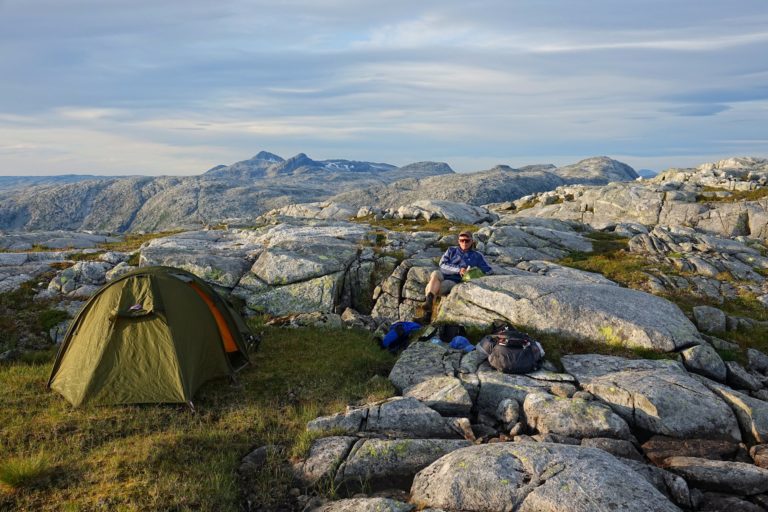


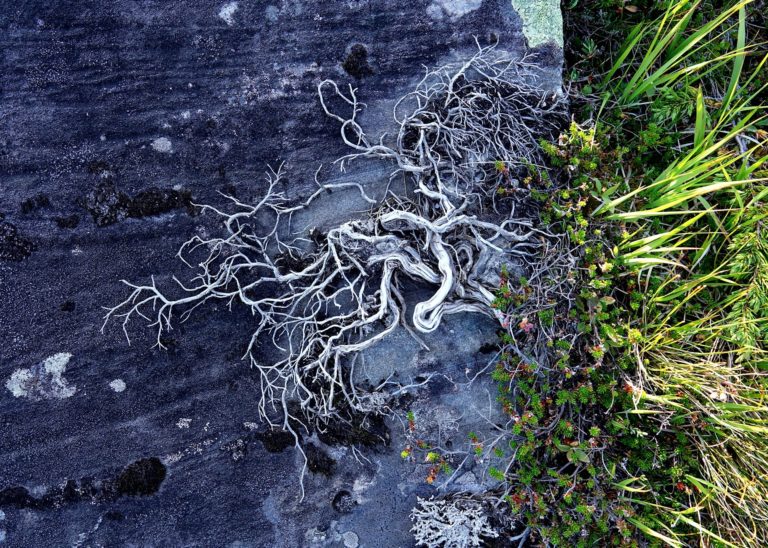
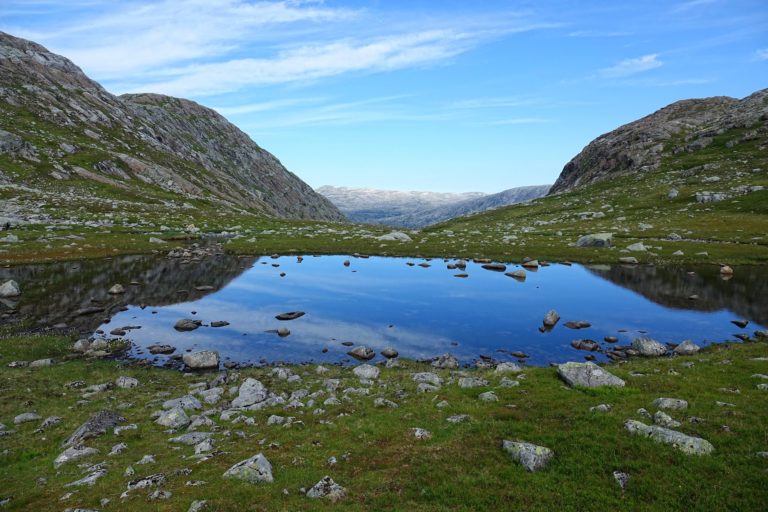
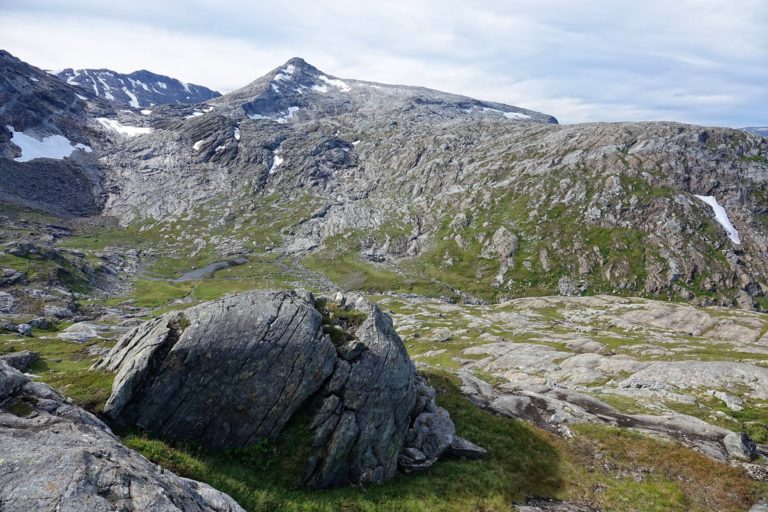

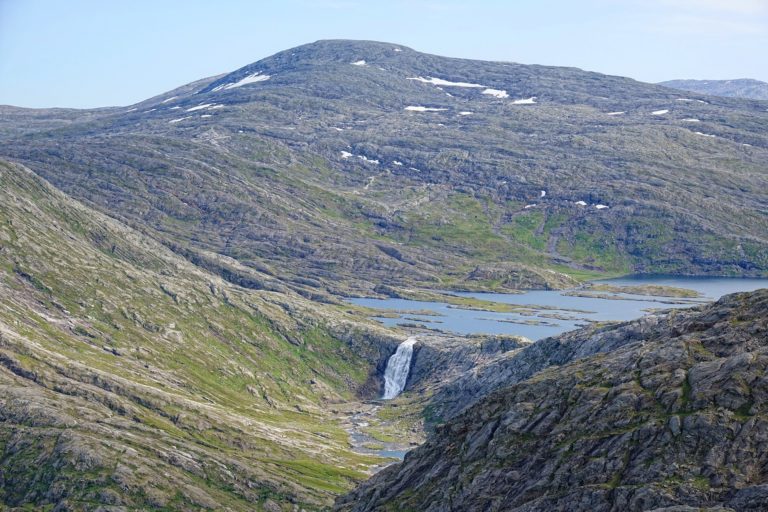
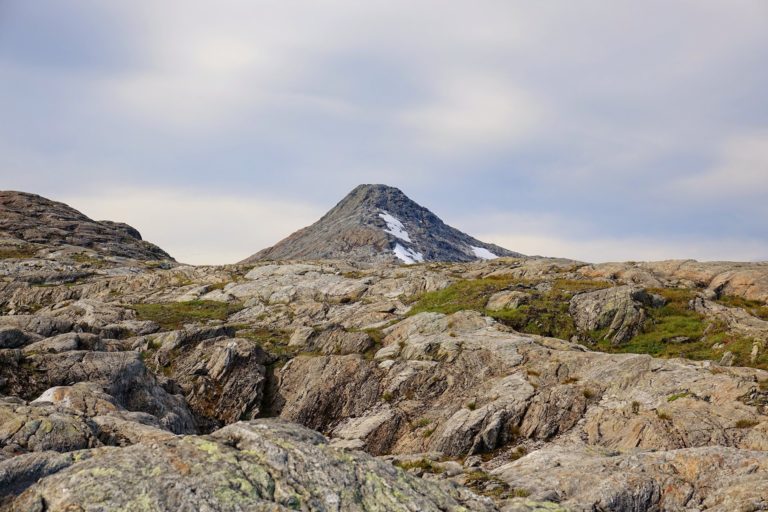
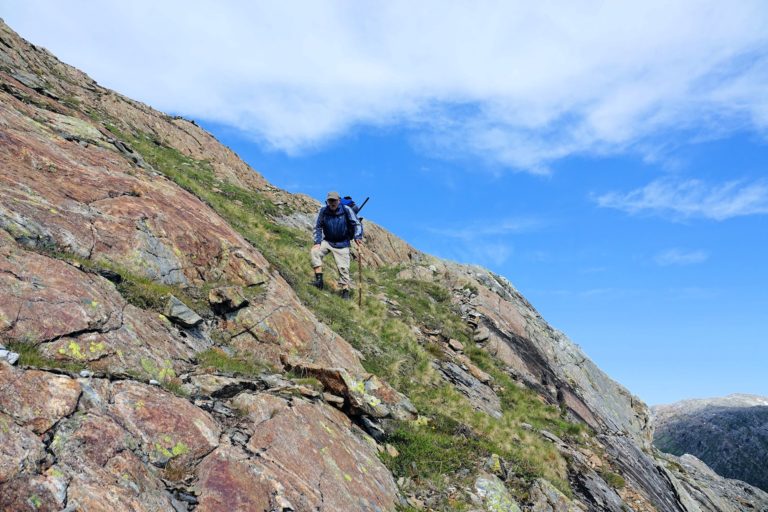
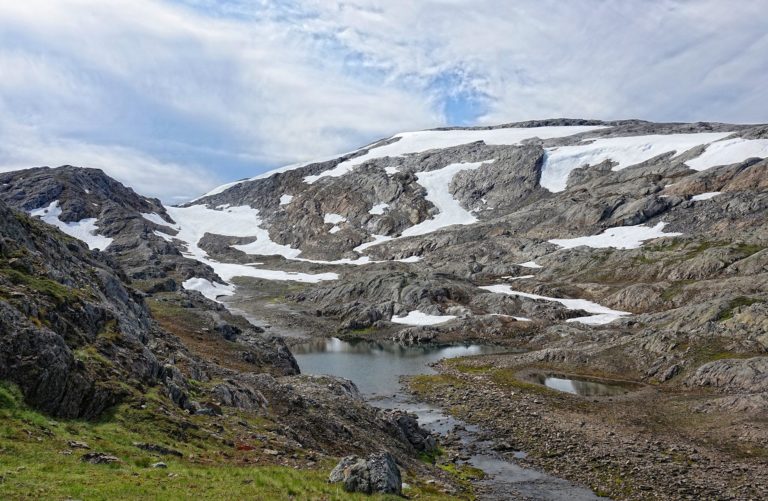

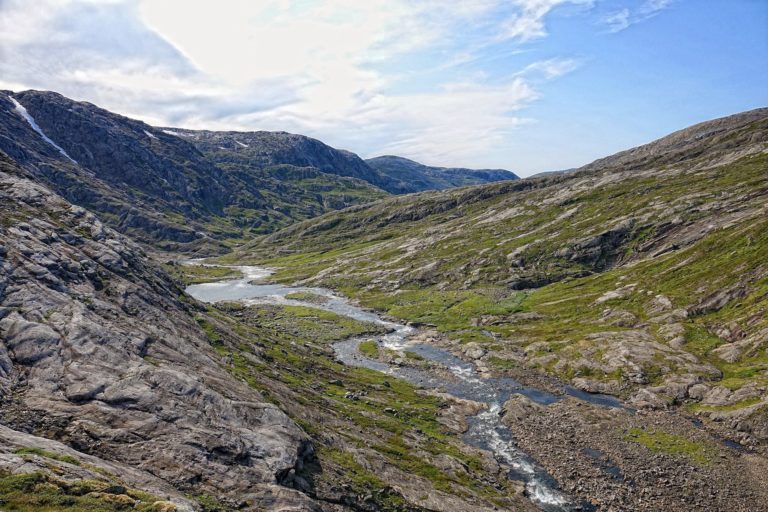

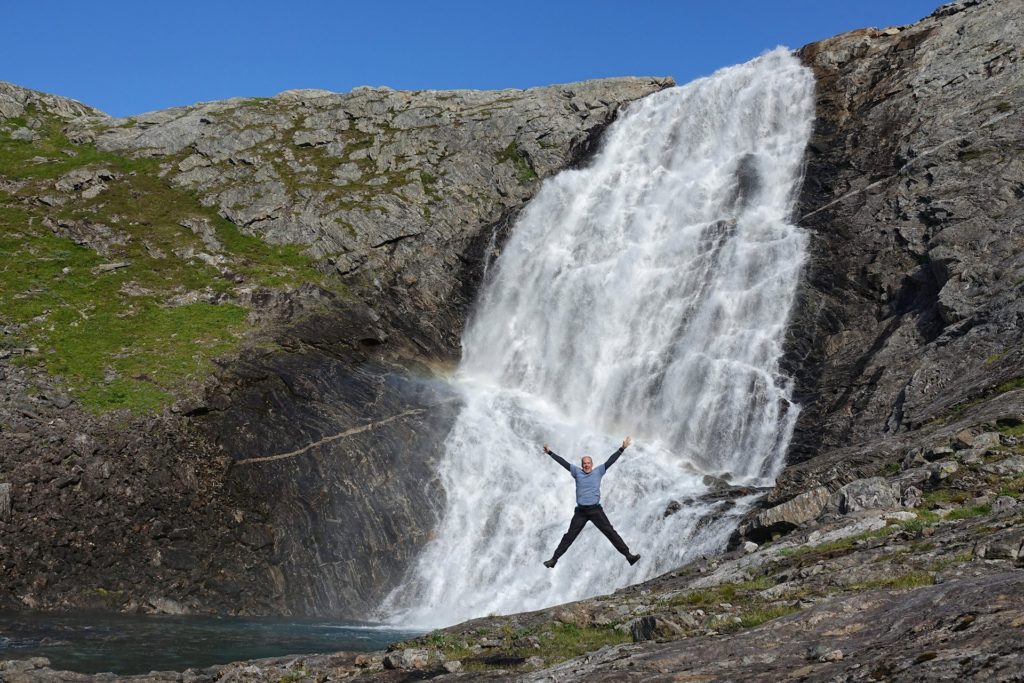
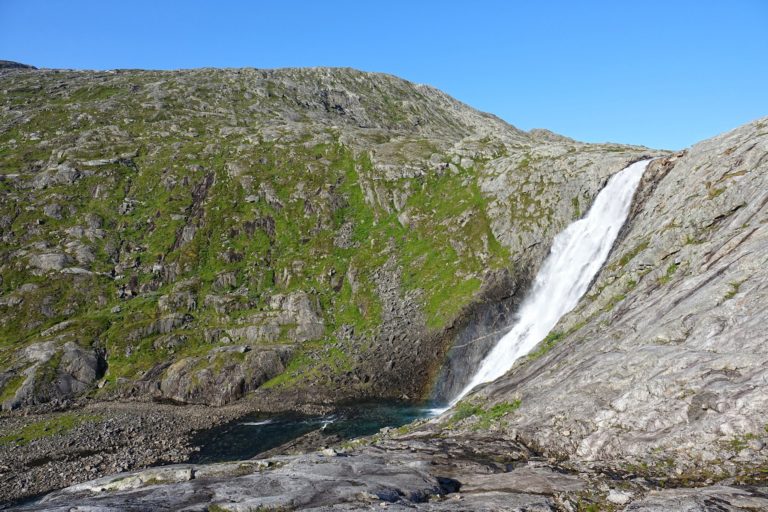
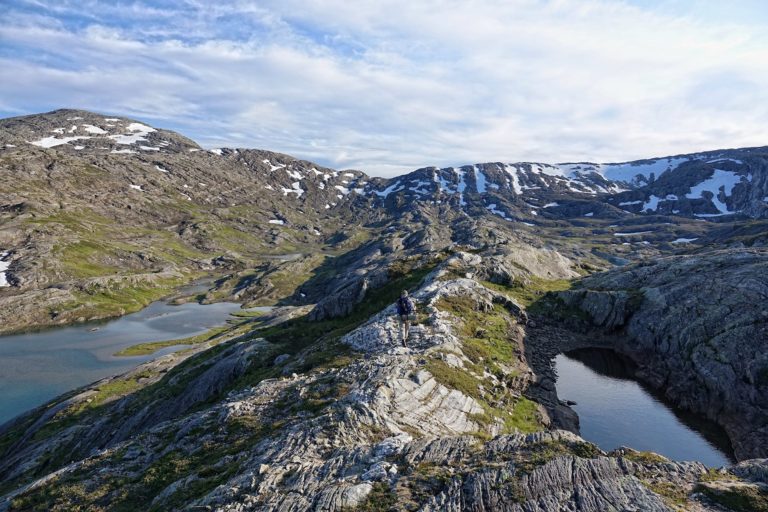
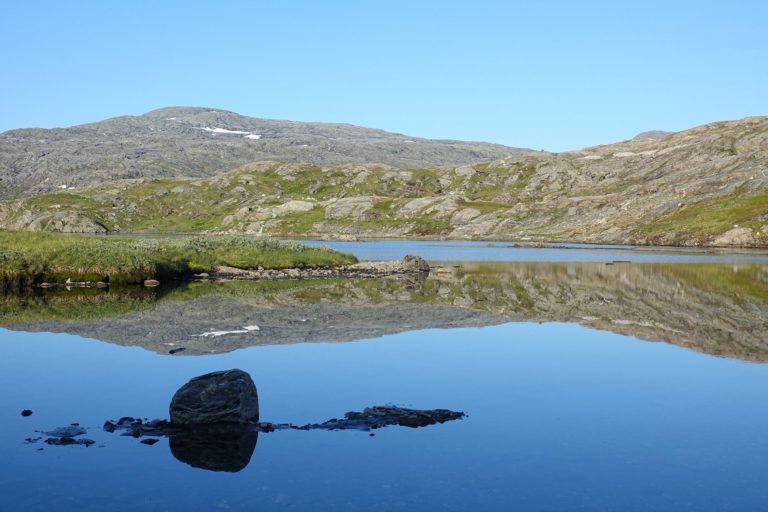
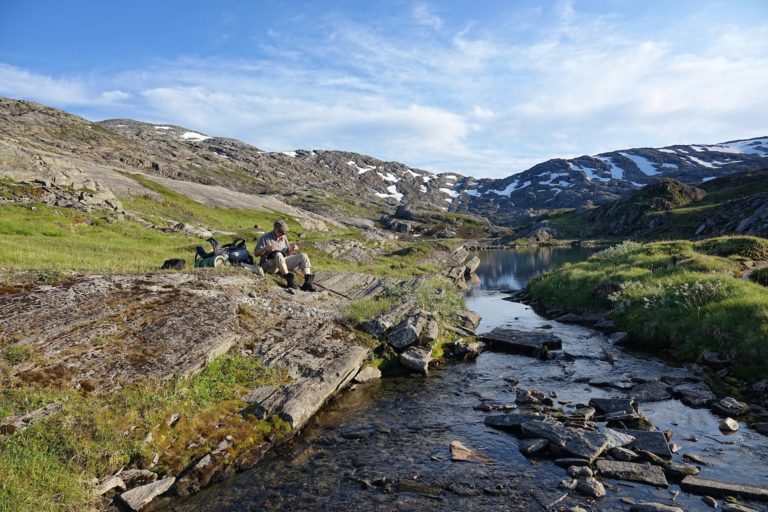
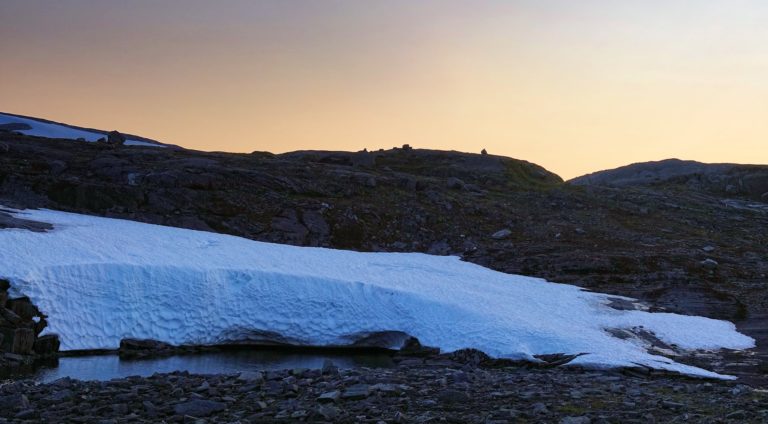
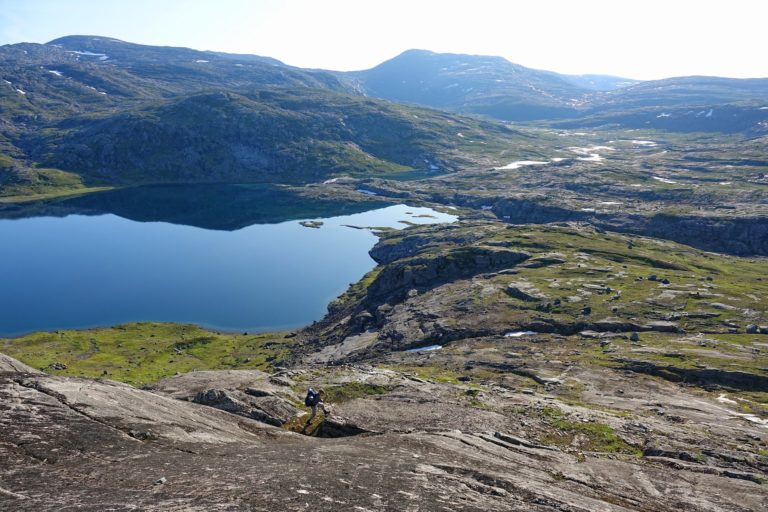
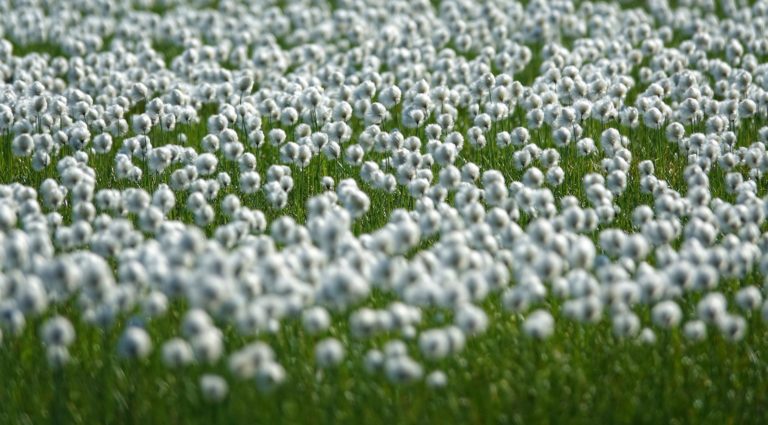
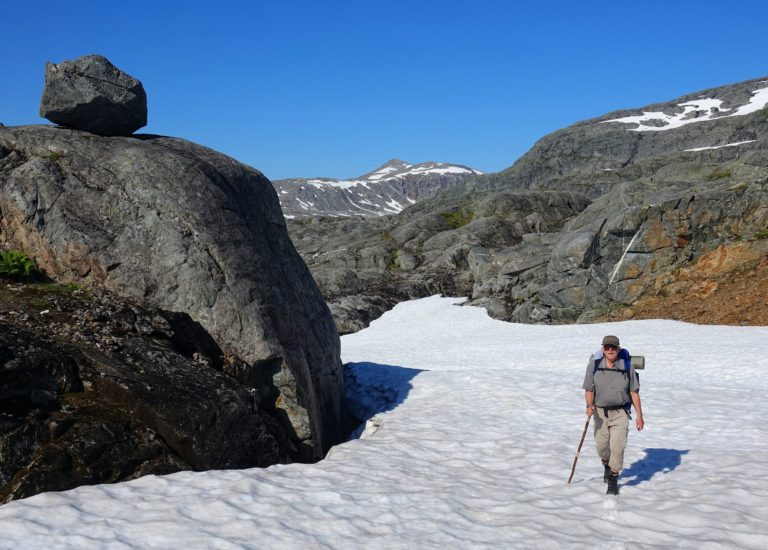
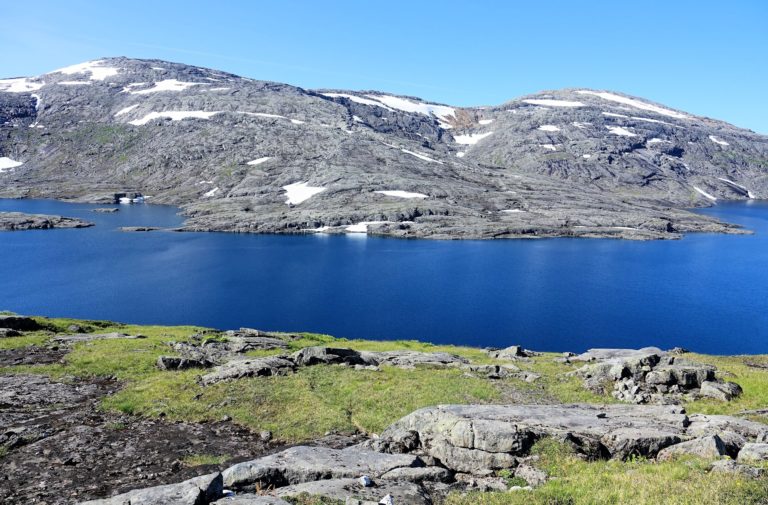






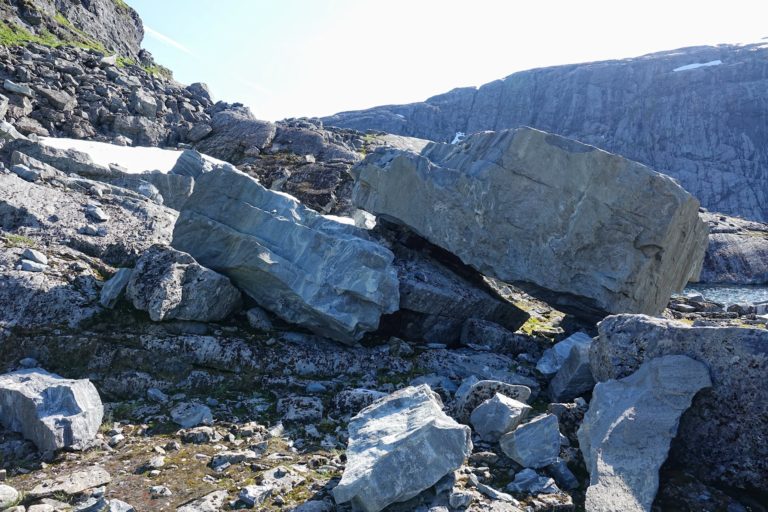
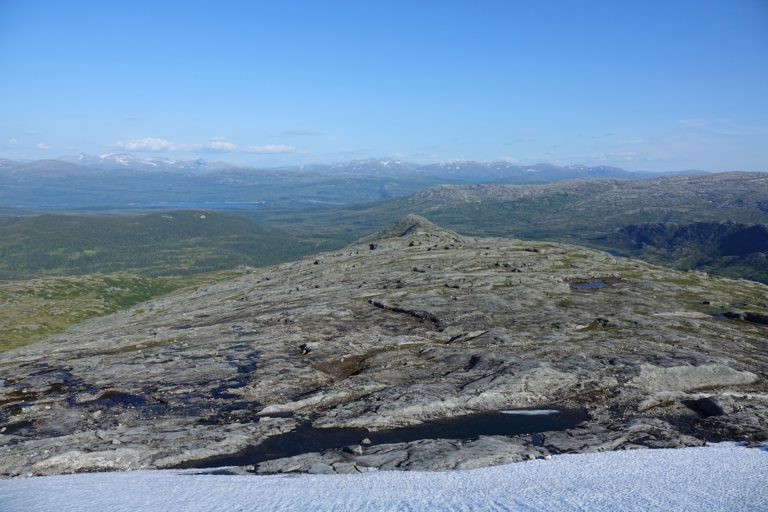
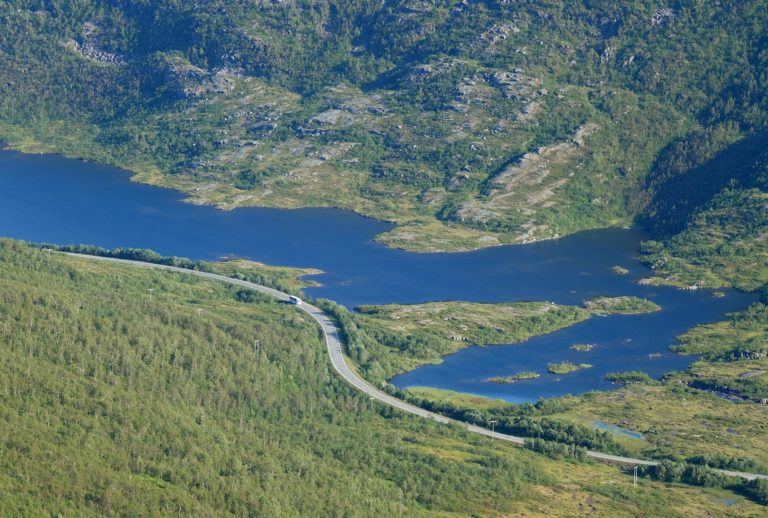
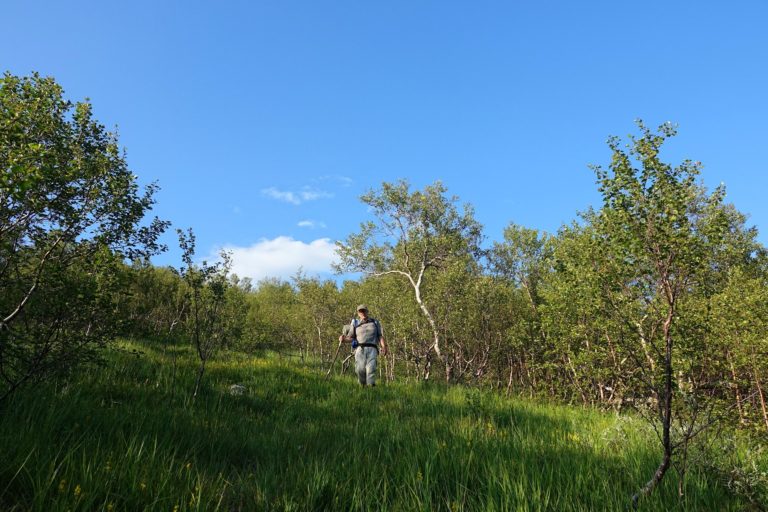
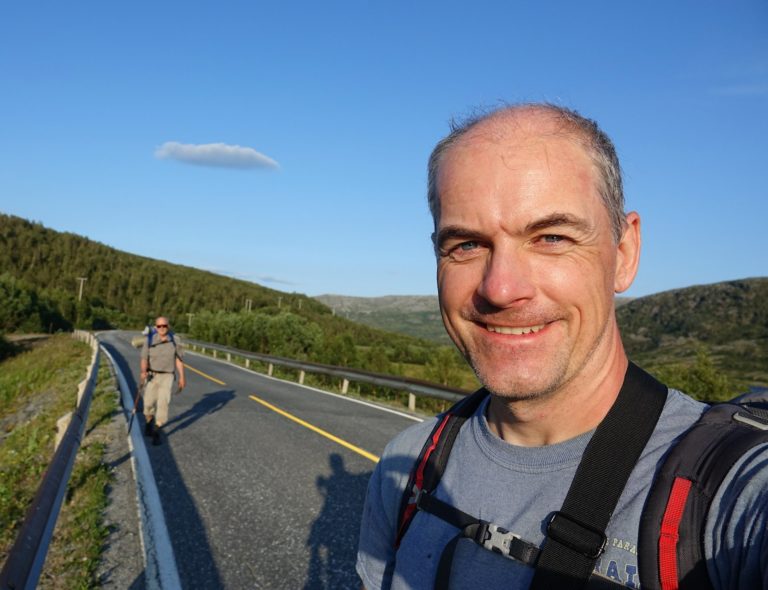

4 Comments. Leave new
This hike is now on my bucket list 😉 Thanks for sharing!
It’s an excellent choice, but not the easiest among many tempting hikes in Norway. Let me know if you actually go ahead and complete this item on your bucket list!
Happy trails to you, Michelle.
Fantastisk turbeskrivelse og nydelige bilder. Jeg er så enig i din kommentar at etter første dag var dere helt utslitte (destroyed), men etter noen dager var det omtrent en lek. Jeg var nettopp i Aosta-dalen i Italia og vandret i 6 dager med en liten gruppe. Knærne var temmelig gå’ne etter andre dag (jeg er 75 år) med 450 høydemeter første dag og ned samme, og 500 neste dag. Da ble det nesten “lett” med 700 høydemeter opp og 1000 ned den 4. dagen! Savner disse turene og prøver å opprettholde kondisen her hjemme i Lier så godt jeg kan, men det er ikke helt det samme som å ha synet av Matterhorn og Monte Rosa hver dag!
Tusen takk for en fabelaktig “tur”! (Jeg er en bekjent av dine foreldre fra en tur til Thailand for flere år siden. Jeg lurer på hvorfor du skrier på engelsk; regner med du har venner/kolleger som snakker engelsk?)
Hei Bente! Så hyggelig å høre at du “ble med” på turen og likte den. 🙂 Håper du får fortsette å gå i fjell både her og der lenge ennå. Mamma og pappa er flinke og bruker nærområdet sitt, og jeg blir stadig imponert over turene de går.
Jeg er aktiv på mange forskjellige deler av Internetten hvor engelsk er “arbeidsspråket”, så det er mest praktisk å skrive på engelsk. Tidligere har jeg kjørt parallelt norsk og engelsk, men responsen er veldig mye større på engelsk, så jeg har valgt å kutte norsk. Du kan finne gamle tospråklige reiseskildringer fra mange steder om du klikker deg litt rundt på sidene her.
Happy trails!